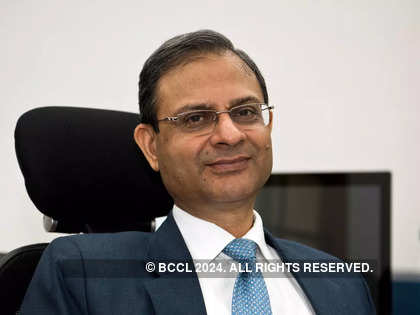NEW DELHI: The government on Monday appointed Union revenue secretary Sanjay Malhotra as the 26th governor of the Reserve Bank of India (RBI) for a three-year term starting December 11. The announcement by the Cabinet Committee of Appointments, came just a day before incumbent Shaktikanta Das’s extended six-year term was to end, and amid signs of some divergence in opinion between the government and the central bank on the immediate monetary policy outlook.
It also coincided with a global situation, where lingering core inflation is complicating key central banks’ efforts to balance growth and inflation risks, and came close on the heels of China’s top leaders signalling, for the first time since the onset of the global financial crisis in 2008-09, an easing of monetary policy in 2025.
Malhotra, a 1990-batch IAS officer of Rajasthan cadre, will assume charge in the backdrop of the RBI keeping the benchmark repo rate unchanged at 6.5% for an eleventh time in a row, in last week’s monetary policy. The RBI had stuck to its ground despite calls for a rate cut from several quarters, including top government functionaries.
While the growth in gross domestic product (GDP) plunged to a seven-quarter low of 5.4% in the second quarter of the current fiscal demand looked weak, the RBI maintained its “neutral” stance. It said “credible evidence” was needed on the outlook for inflation, which it seeks to align with the 4% target on a durable basis.
Economists said establishing “right balance” between growth and inflation will be the biggest challenge that the new governor will be facing. “The balance has to be struck, not only through monetary policy means, but also through fiscal measures (by the government),” said NR Bhanumurthy, director, Madras School of Economics.
The Economic Survey for 2023-24 had proposed exclusion of food from the RBI’s inflation-targeting regime. While commerce and industry minister Piyush Goyal backed it, finance minister Nirmala Sithjaraman also spoke about the need to make interest rates “far more affordable.”
Former Chief Statistician of India Pronab Sen, however, said: “What matters at the end of the day is inflation as a whole. Let the RBI decide what instruments to use for which purpose.” According to him, in a “stagflationary situation,” when high food inflation could lead to generalised price pressures, the RBI should not be expected to ignore it, while deciding the monetary policy.
On low growth of 5.4% in Q2, Sen said that when investment’s share in GDP is 30-32%, growth can’t stay above 6-6.5% for a long time. “We’re only seeing growth being normalised (after the pandemic-induced distortions). That’s not an issue,” he said.
Bhanumurthy said the RBI would also have to carefully navigate the exchange rate going forward, especially once Donald Trump takes over as the US president. “Additionally, in the next two-three years, global inflationary pressure is only going to build up due to volatile external situations,” he said.
DK Pant, chief economist, India Ratings and Research said: “In my view the challenges for the RBI in the near-term are maintaining price stability, which is paramount, and supporting growth by low real rate of interest, and reviving demand through policy measures.”
If the economy is not growing, at a time when inflation is rising, corporate balance sheets will come under pressure, which in turn will have an adverse impact on the government balance sheet, Pant added.
However, a couple of other economists, not willing to be identified, said that the incoming governor should have a re-look at the inflation targeting regime, which aims at keeping the headline CPI inflation rate at 4% (with a band of 2% on either side) on a durable basis.
The major reason for India’s inflation to overshoot the RBI’s forecast in the current fiscal year was higher-than-expected food prices. But core inflation too started to rise in recent months, after dropping to around 3% in May on account of rising commodity prices and unfavourable base.
According to analysts, core inflation may touch 4% in the next three months. The RBI has lately reduced the growth forecast for FY25 to 6.6% from 7.2% projected earlier, and revised its inflation outlook upwards for the year upwards by 30 bps to 4.8%.
In H1FY25 , India’s economy has grown 6%, which is about 100 basis points lower than what the RBI had anticipated earlier. CPI inflation has averaged 4.8% in the first seven months of FY25, which is about 30 bps above the central bank’s previous forecast.
Malhotra, 56, took over as revenue secretary in December 2022. Prior to that, he served as secretary in the department of financial services. As revenue secretary, he has overseen three Budget exercises– 2023-24, and the interim and full Budgets for 2024-25.
In his tenure, the finance ministry undertook a major overhaul of the capital gains tax structure, lowered personal income tax rates (PIT) for taxpayers with a new exemption-less regime, and abolished the controversial angel tax, which had hit the start-up ecosystem. He has extensive experience in finance and taxation at the state as well as the Central government.
Malthora is an engineering graduate from Indian Institute of Technology (IIT), Kanpur and has a Master’s in Public Policy from Princeton University, USA.
Source: The Financial Express

 Can Germany’s Left Party Die Linke Revive Itself Before 2025 Polls?
Can Germany’s Left Party Die Linke Revive Itself Before 2025 Polls? 